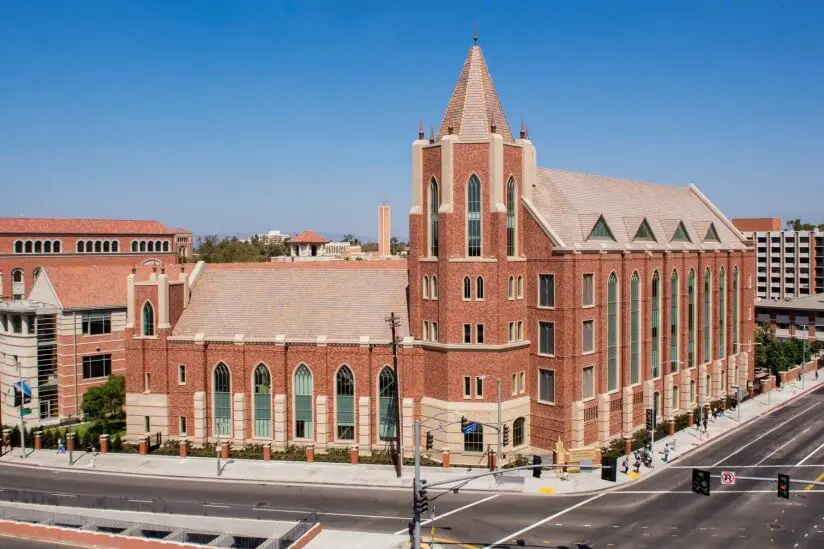YMCA Mission and Vision Statement Analysis

YMCA’s mission statement changes depending on nations and regions. The homepage of the organization states that “each local YMCA is driven by their own mission statement to help them address the unique needs of their communities.” This statement indicates that the mission statement of the YMCA in the U.S is different from the one in the U.K. However, they all retain the basic principles of the organization. For instance, while the mission statement of YMCA in the U.S. is “to put Christian principles into practice through programs that build healthy spirit, mind, and body for all,” the one for the UK is “to demonstrate Christ’s love through practical service that empowers young people and their communities to flourish. We welcome: We offer people the space they need to feel secure, respected, heard and valued; and we always protect, trust, hope and persevere.” Despite the variations in the framing of the two mission statements, they have striking similarities especially in the approaches of their work and the impacts they want to have on the lives of people. The same case applies to all other local YMCAs across the world. These mission statements relate to the following components.
- Improving lives
- Improving communities
In the first component, YMCA strives to make a difference in the lives of the vulnerable and the young irrespective of where they are on planet earth. Perhaps, this is in compliance with the Christian teachings of reaching out to the needy and warming their hearts with good deeds. The activities and programs for helping individuals vary depending on the needs in a particular region. For instance, in the UK, YMCA has a wide range of youth activities where they nurture teenagers and children to grow into responsible and complete members of their communities. Similar programs are also part of other local YMCAs in Africa, Asia, and other parts of the world. The second component is directly related to the first one as it focusses on the influence YMCA has on the larger communities. YMCA was established to not only develop and connect youths in their regions and beyond, but also address some of the most pressing social issues that threaten the stability of communities. For instance, in the UK, YMCA has been instrumental in the integration processes of reformed ex-offenders through its programs that enable them to find opportunities after serving their sentences. Moreover, there are others that focus on improving the mental wellness of youths, while others such as the U.S. based influence on sustainable development goals. All these efforts impact on communities positively and in different ways.
Introduction
The Young Men’s Christian Association, popularly known as the YMCA international is an organization whose mission and vision statements demonstrate how progressive a firm can be when it tailors its strategies depending on regional needs.
The two corporate statements of the YMCA reflect the leadership nature of the company and its focus on empowering the youths across the globe to become independent and influential wherever they are. YMCA has maintained its principles of inclusivity and prioritization of the most pressing needs of the young people depending on their unique circumstances since its foundation in 1844 by Sir George Williams in England.
In fact, the adaptability of its mission and vision in various parts of the world is what has given YMCA a global profile, with regional traits. A corporate vision statement describes the desired future for a company. In the case of the YMCA, its vision statement is to transform people and communities through its dependable and reliable leadership. On the other hand, a corporate mission statement outlines the strategic approaches through which the operations of an organization are run to achieve the vision.
For YMCA, its mission exhibits the influence of the body, especially while applying Christian values to leave an impact on people’s lives. In addition, YMCA incorporates various core values into its business approaches, and this has seen the company establish an identity for over a century.
The core values govern the practices of the body giving some sense of uniqueness unlike in other organizations. In fact, the interaction between these values and the mission and vision statement is what has changed the YMCA into the global establishment in the modern era.
Vision Statement
YMCA’s vision statement also varies regionally due to differing needs. Despite this, all the YMCAs globally have a singular commitment “to empower young people – from childhood to young adulthood – with the support they need to reach their potential and create a better future for all.” With this focus, YMCA shows that its all about empowering people to achieve their best in life, and this affirms its dedicated leadership and mentoring nature. The vision statement can be broken down to these features:
- Empowering the youth
- Creating a better future
YMCA’s primary agenda is to mentor and develop individuals who benefit from its programs into responsible and progressive individuals. The organization has put in place numerous programs, all localized and tailored to meet the needs of youths based on their environments. Moreover, YMCA goes on to champion for streamlining other systemic aspects such as local and global peace, social justice, universal education, and civic education, and employment among others to give the youths equal growth opportunities. By stimulating positive social and economic changes across the globe, YMCA satisfies its second feature in this vision statement. It does this by creating opportunities where all youths can thrive and create a good future for themselves.
Core Values
YMCA core values comprise “caring, respect, honesty, responsibility, and inclusiveness.” The organization has been solid and operation for over a century specifically due to its strong internal culture supported by these principles.
To ensure that the establishment upholds the Christian values, all YMCAs share similar principles of operations. They are led by the element of caring for others, and this is what drives the need to help those in need and empower them to be better individuals in communities. Respect and honesty in all the dealings of the YMCA have particularly given it a strong foundation, and this strengthened by the spirit of responsibility and inclusiveness where people embrace others while doing the best they can to achieve the vision of the organization.
References
- Adamson, K., Shepard, D., Easton, A., & Jones, E. S. (2009). The YMCA/Steps Community Collaboratives, 2004-2008. Preventing chronic disease, 6(3), A109-A109.
- Alva, M. L., Hoerger, T. J., Jeyaraman, R., Amico, P., & Rojas-Smith, L. (2017). Impact of the YMCA of the USA Diabetes Prevention Program on Medicare spending and utilization. Health Affairs, 36(3), 417-424.
- Bartkus, B. R., & Glassman, M. (2008). Do firms practice what they preach? The relationship between mission statements and stakeholder management. Journal of business ethics, 83(2), 207-216.
- Beets, M. W., Weaver, R. G., Moore, J. B., Turner-McGrievy, G., Pate, R. R., Webster, C., & Beighle, A. (2014). From policy to practice: strategies to meet physical activity standards in YMCA afterschool programs. American journal of preventive medicine, 46(3), 281-288.
- Dato-on, M. C., Keller, E. W., & Shaw, D. (2008). Global nonprofit brands with local missions: The YMCA across three countries. The International Journal of the Academic Business World, 2(2).
- Fernández Guerra, A. (2012). Translating culture: problems, strategies and practical realities. Sic: časopis za književnost, kulturu i književno prevođenje, (1-Year 3), 0-0.
- Kantabutra, S., & Avery, G. C. (2010). The power of vision: statements that resonate. Journal of business strategy, 31(1), 37-45.
- Mozaffarian, R. S., Wiecha, J. L., Roth, B. A., Nelson, T. F., Lee, R. M., & Gortmaker, S. L. (2010). Impact of an organizational intervention designed to improve snack and beverage quality in YMCA after-school programs. American Journal of Public Health, 100(5), 925-932.
- Roth, K., & Columna, L. (2011). Collaborative strategies during transition for students with disabilities. Journal of Physical Education, Recreation & Dance, 82(5), 50-55.
- Salem Khalifa, A. (2012). Mission, purpose, and ambition: redefining the mission statement. Journal of Strategy and Management, 5(3), 236-251.
- Somerville, P., Brown, P., Morris, G., & Scullion, L. (2011). Young people living in the YMCA. Social Policy and Society, 10(4), 559-570.
- Wallace, M., & Weese, W. J. (1995). Leadership, organizational culture, and job satisfaction in Canadian YMCA organizations. Journal of Sport Management, 9(2), 182-193.
- YMCA – About.
- Zald, M. N., & Denton, P. (1963). From evangelism to general service: The transformation of the YMCA. Administrative Science Quarterly, 214-234.












